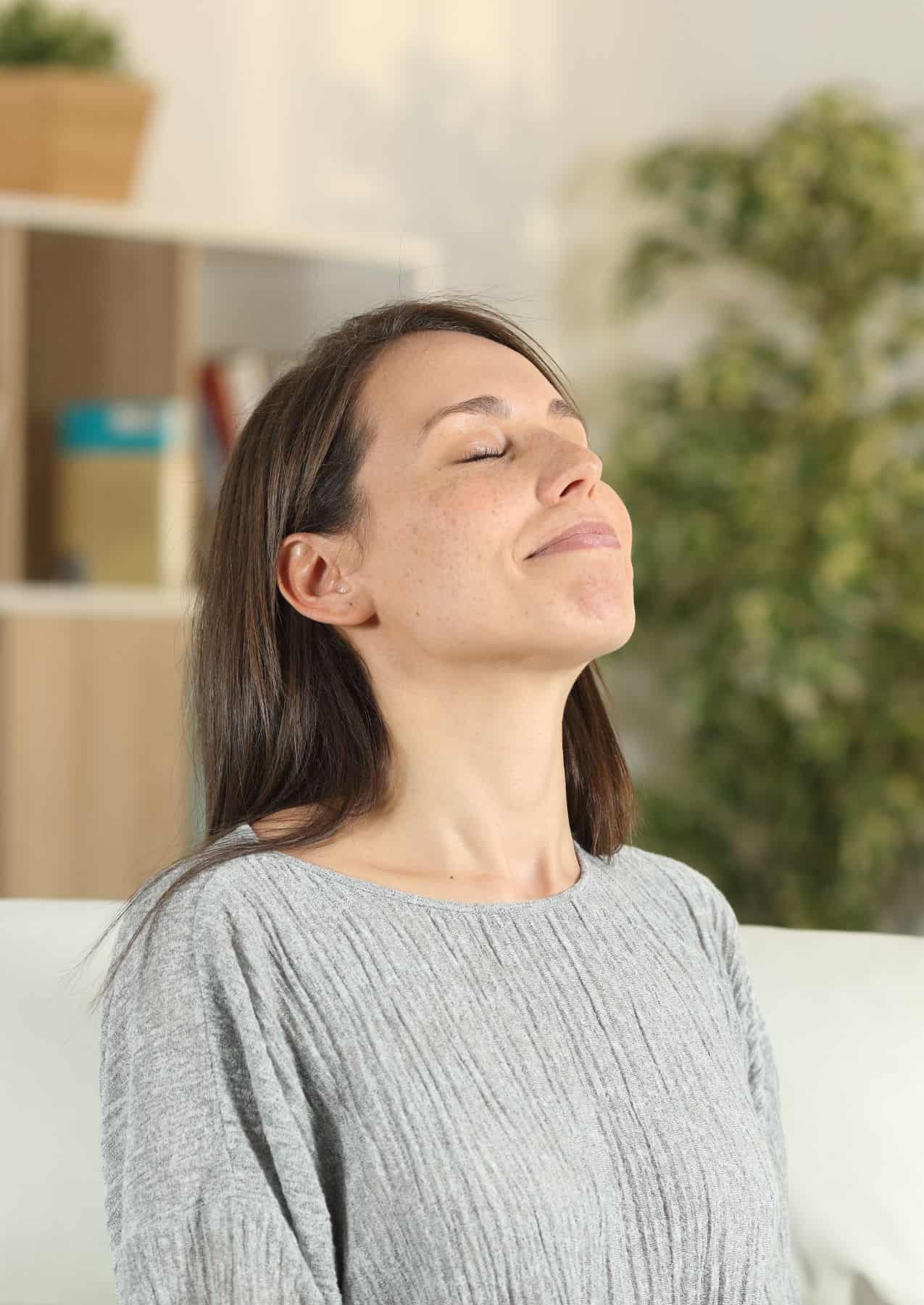As a busy executive I rarely, if ever, took time to meditate or practice mindfulness. I was being pulled in a hundred different directions and often felt that taking time for myself was just ‘another thing’ to add to the pile.
But here’s the truth: taking just a few moments each day for meditation or mindfulness can do wonders for your stress levels, focus, and overall well-being. And no, it doesn’t have to mean sitting cross-legged on the floor for hours at a time.
The good news? Meditation and mindfulness practices can be short, simple, and totally doable—even on your busiest days. Let’s dive into some easy, time-efficient meditation techniques that can fit seamlessly into your life.
Why Meditation Matters for Executives
First off, let’s get real about why you might want to try meditating in the first place. As an executive, you’re used to high levels of stress, but constant pressure can take a toll on your health, performance, and happiness. Here are some of the key benefits meditation can bring to your busy life.
Less Stress
Meditation is an incredible stress reliever. Just taking a few minutes to slow down and breathe can reduce the anxiety and tension that often come with high-pressure responsibilities.
Sharper Focus
A regular meditation practice can actually help you stay more focused throughout the day. It’s like a workout for your brain, helping you avoid distractions and make decisions more clearly.
Emotional Balance
Meditation and mindfulness also helps with emotional intelligence. It makes you more aware of your feelings and gives you more control over how you react, which is a huge asset when you’re leading a team.
Creative Boost
Need to think outside the box? Meditation has been shown to spark creativity and help you solve problems with a fresh perspective.
Work-Life Balance
Finally, meditation helps you create some distance between work and home life. Even if you only have a few minutes, this little bit of “me time” can do wonders for maintaining balance.
Meditation Myths That Hold People Back
Before we get into the actual techniques, let’s bust some myths that might be keeping you from trying meditation.
Myth #1: Meditation Takes Too Much Time
You don’t need an hour for it to be effective. Honestly, just a few minutes can be transformative. The key is consistency, not duration.
Myth #2: You Have to Empty Your Mind
It’s not about stopping your thoughts. Spoiler alert: you’re always going to have thoughts! Meditation is about being aware of your thoughts and gently bringing your attention back to your breath or whatever you’re focusing on.
Myth #3: It Needs a Special Setting
Forget candles, cushions, or perfect silence. You can meditate at your desk, in your car (while parked!), or while you’re on a walk. The important thing is just to start.
Time-Efficient Meditation Techniques for Busy Schedules
Now that we’ve got the myths out of the way, here are some quick meditation techniques that you can do anytime, anywhere—no yoga mat required.

Mindful Breathing (2-5 Minutes)
How to Do It: This one’s super simple. All you need to do is focus on your breath for two to five minutes. Sit comfortably, close your eyes if you want, and breathe in through your nose, hold it for a moment, then exhale through your nose. Just pay attention to the flow of your breath. If your mind starts wandering (which it will), just gently guide it back.
When to Use It: Perfect for a moment of calm before diving into a big meeting or project.
Why It Works: Mindful breathing calms your nervous system fast. It’s like hitting the reset button on your stress levels.
Body Scan Meditation (5-7 Minutes)
How to Do It: Start by focusing on your toes and slowly move your attention up through your body—all the way to your head. As you focus on each area, notice any tension or discomfort, and simply breathe into that area. No need to force anything; just observe and be present.
When to Use It: This works well when you need to unwind after a long day or before heading to bed.
Why It Works: It’s great for reducing physical tension and reconnecting your mind and body.
Guided Meditation (5-10 Minutes)
How to Do It: Use an app like Headspace or Calm. There are tons of guided meditations out there for different purposes—stress relief, focus, gratitude, you name it. Just pop in some earphones and listen. Here’s a FREE audio guided meditation to help you get grounded and reduce your stress: https://executiveexhale.com/instant-calm/
When to Use: During a lunch break, while commuting (as long as you’re not driving), or even first thing in the morning.
Why It Works: Guided meditations help you stay on track, especially if you find it hard to sit still or focus on your own.
Box Breathing (4-5 Minutes)
How to Do It: Inhale for a count of four, hold for a count of four, exhale for a count of four, hold again for a count of four. Repeat this cycle for a few minutes. You’re literally “boxing” your breath into these four phases.
When to Use: Before a big presentation, a challenging conversation, or any high-stress situation.
Why It Works: This method helps control your breathing, slows your heart rate, and reduces anxiety almost instantly. If you breathe entirely through the nose, you will engage your ‘rest and digest’ system called the parasympathetic nervous system and you will feel a calmness take hold after 8-9 cycles.
Walking Meditation (8-10 Minutes)

How to Do It: Instead of rushing from point A to point B, take a short walk and focus on the sensation of walking. Notice how your feet hit the ground, how your legs move, or even the sounds around you.
When to Use: When you need a break from sitting or want to use your commute time more mindfully.
Why It Works: It’s an easy way to combine light exercise and mindfulness, giving you a fresh burst of energy.
Gratitude Meditation (3-5 Minutes)
How to Do It: Spend a few minutes thinking about three things you’re grateful for. Focus on why you’re thankful for them and how they make you feel. Really focus on the feelings rather than the thoughts. They could be work-related, personal, big or small—anything that brings a smile to your face.
When to Use: Either first thing in the morning to kickstart your day positively or in the evening to unwind and reset before bed.
Why It Works: Gratitude shifts your focus from stress to what’s going well and helps cultivate a positive mindset that can change your entire outlook.
One-Minute Pause (1 Minute)
How to Do It: Whenever you’re overwhelmed, just stop for one minute. Close your eyes, take a deep cleansing breath, and let your thoughts settle. You’re not trying to force anything—just pause.
When to Use: Whenever you’re feeling overwhelmed or stuck.
Why It Works: It’s a quick mental reset that can help you regain focus and clarity, especially during a busy day.
How to Fit Meditation into Your Busy Life
I know what you’re thinking—”How am I supposed to fit this in?” The truth is you can make meditation part of your day without it feeling like a chore.
Link It to an Existing Habit: Want to make it stick? Attach it to something you already do. Meditate right after brushing your teeth or after you sit down at your desk in the morning. This way, it becomes a natural part of your routine.
Schedule It: If you live by your calendar, add meditation to it just like you would a meeting. It’ll remind you to take that small but meaningful pause.
Use Tech to Your Advantage: There are so many apps out there that can help remind you to meditate and guide you through it. Use them! Let technology support your mental well-being.
Start Small: Start with just a minute or two. The idea isn’t to meditate for hours—it’s about consistency. Over time, you’ll likely find that adding more minutes becomes easier.
Wrapping It Up
Meditation doesn’t need to be a grand, time-consuming event. With just a few minutes here and there, you can reap the benefits—reducing stress, increasing focus, and boosting your emotional well-being.
It’s not about being perfect; it’s about finding small moments to reconnect with yourself throughout the day.
Connecting with yourself and taking time for your mental health isn’t a luxury, it’s a necessity. Even a couple of minutes of mindful breathing or walking meditation can make a significant difference.
Give one of these methods a try this week—start small, stay consistent, and see how much better you feel.
Feeling overwhelmed by your leadership challenges or do you want to start taking steps to a more balanced and peaceful life? Set up a no-pressure call to explore how we can help you achieve leadership wellness.



